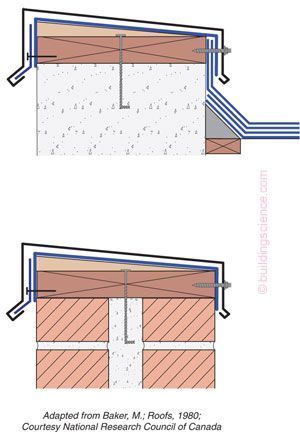The design of drainage falls should ensure that the continuity of the waterproof covering is maintained for a vertical height of 150mm above the finished roof level at all abutments door openings and parapets.
Flat roof upstand flashing.
Banding is typically used to seal soil vent pipes on single ply roofs such as fdt rhepanol pib and involves wrapping an unreinforced membrane around the pipe to a minimum height of 150mm.
Completely pre assembled at the factory full size adhesive bond of the flashing collar on the upstand material thickness of the sealing layer.
A horizontal gap of minimum 10mm is maintained between frame front edge and drainage channel.
Sealing joins and making neat terminations is so easy with.
Typical methods include banding pitch pockets and cover flashings.
Which would include abutments rooflights.
The waterproof membrane extends 150mm height in the door reveal and roof abutment wall adjacent.
This type of flashing can be used on the front and backs of chimneys abutting brickwork on flat roofs or where a roof meets the brickwork of a house or outbuilding.
What typical detailing methods are used to seal flat roof penetrations.
Lead flashing maximum length.
1 5 mm available in any.
British standard bs 6229 2003 flat roofs with continuously supported coverings section 7 page 12 requires that.
With this collar a tight and homogeneous flashing against the roofing membrane can be achieved far quicker than with manual flashing.
It is also used on slate and tile roofs where they meet a wall or a porch on conservatory roofs and around bay windows.
The waterproof membrane flashing extends fully below the door frame bottom rail and is sealed to it.
Flat roof flashing this could virtually be any type of flat roof the upstand of the flat roof covering is overlapped by the drop of the flashing.
An approved sealant is then applied to the top of the membrane upstand before it is tied off with a jubilee clip.
The requirement for flat roof upstands is set out in the british standard.





























